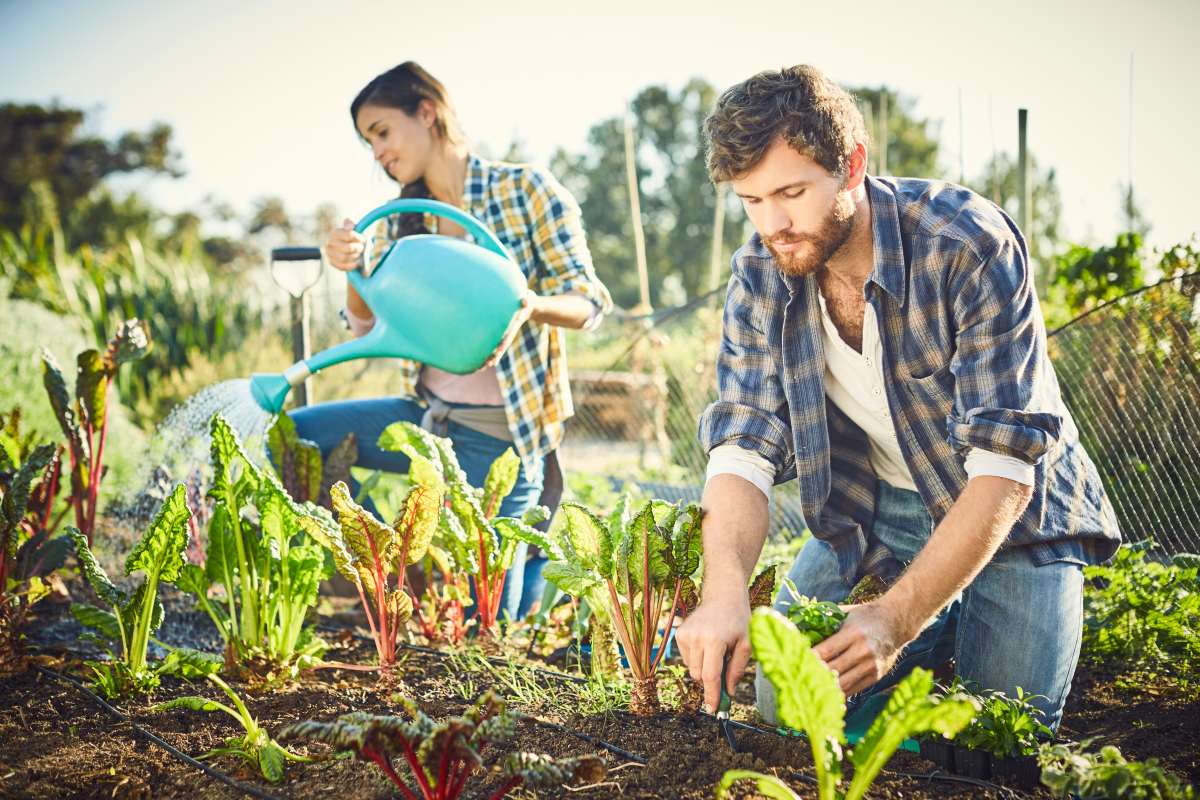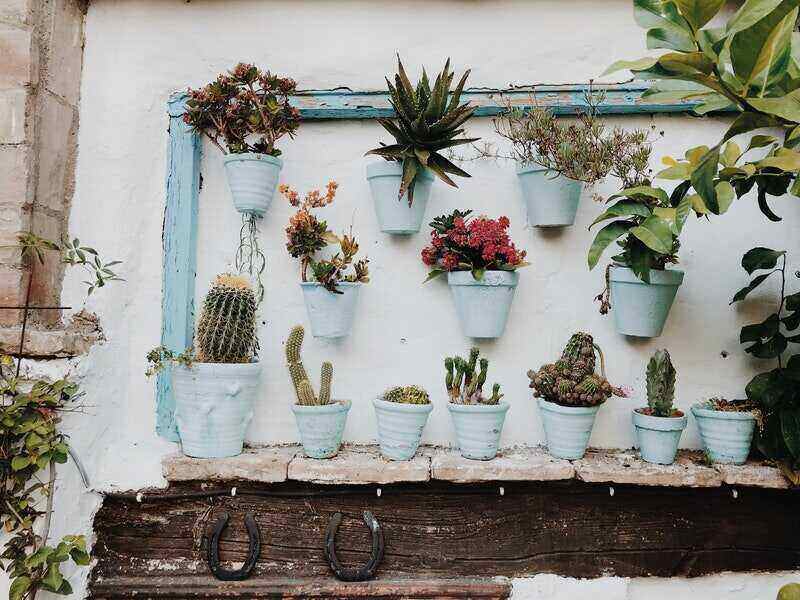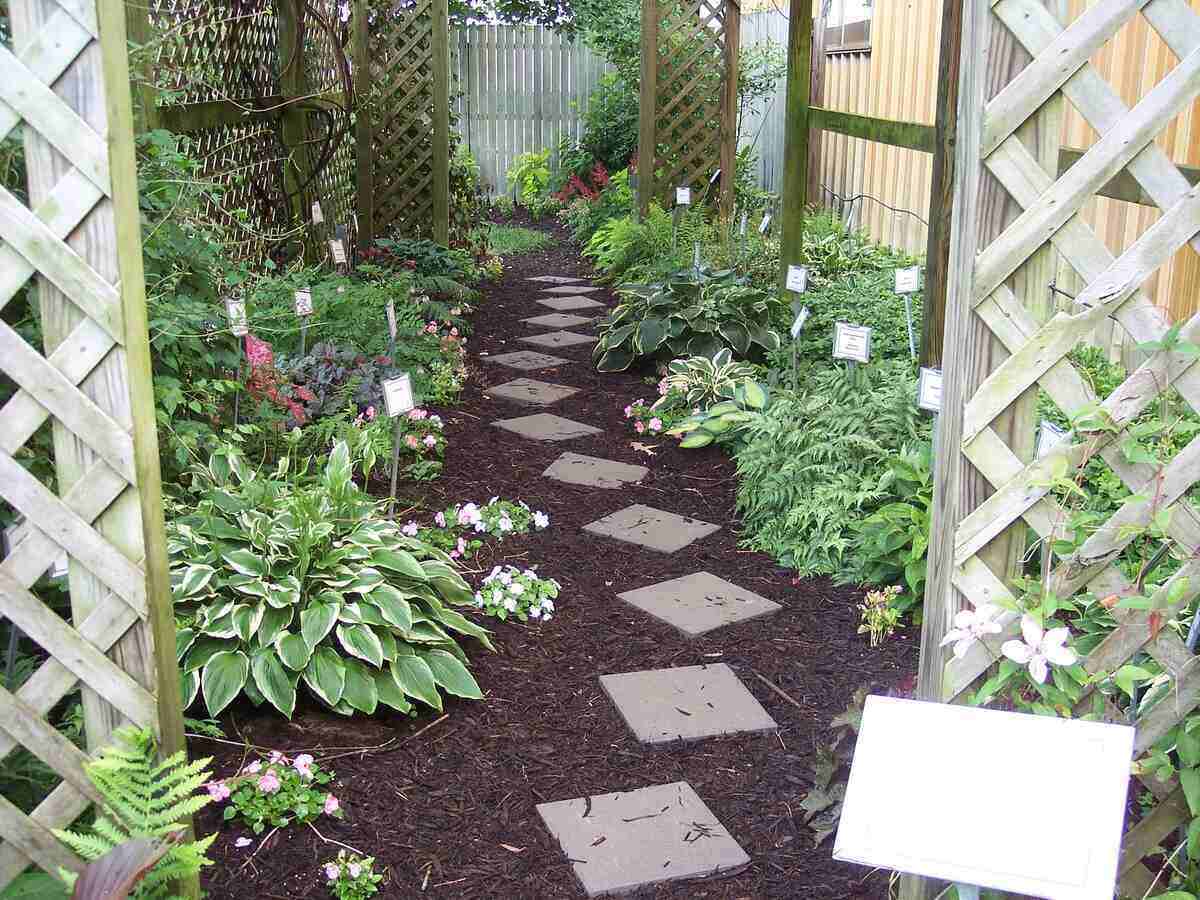
In general, the best time to water your garden is early in the morning, between 5 a.m. and 9 a.m. Watering too late in the day can prevent plants from getting the moisture they need or cause fungal disease.
That being said, different types of plants have different watering needs depending on soil type, age, temperature, and time of day. This article explores when and how much to water your garden depending on the type of plants you’re growing.
The Best Time to Water Your Garden
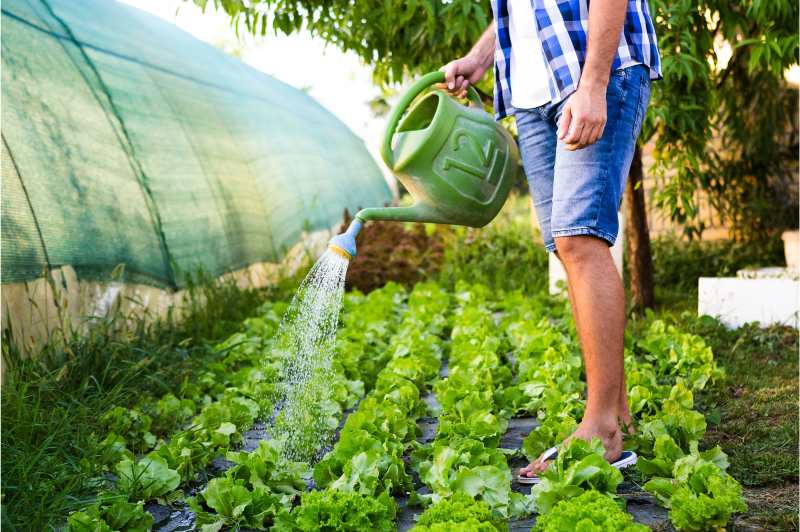
The best time of day to water your garden is the same as the best time to water your grass – in the early morning, between 5 a.m. and 9 a.m. When you water plants early, less moisture is lost to wind and evaporation, meaning the soil absorbs more of the water. Then, once the day gets a bit warmer, the sun will evaporate excess water from the plant leaves, reducing the risk of fungal disease growth.
Evening watering, especially late evening, is advised against because the foliage remains wet overnight, increasing the risk for fungal diseases. However, if you need to water your plants in the evening, using a drip irrigation system or soaker hose will keep the leaves dry.
Avoid watering the garden in the afternoon or midday (between about 10 a.m. and 4 p.m.) due to the effects of evaporation. The water will not have time to soak into the root system if you water during the hottest part of the day.
Signs it is Time to Water Your Plants:
- On especially hot days in the summer, plants need more water.
- Dry soil is also an indicator it is time to water your plants. As a rule of thumb, the soil should be damp and well-drained.
- If your plants are wilted, it is a sign they are stressed due to insufficient water. Water wilted plants immediately, no matter the time of day.
How Much Water to Give Your Garden
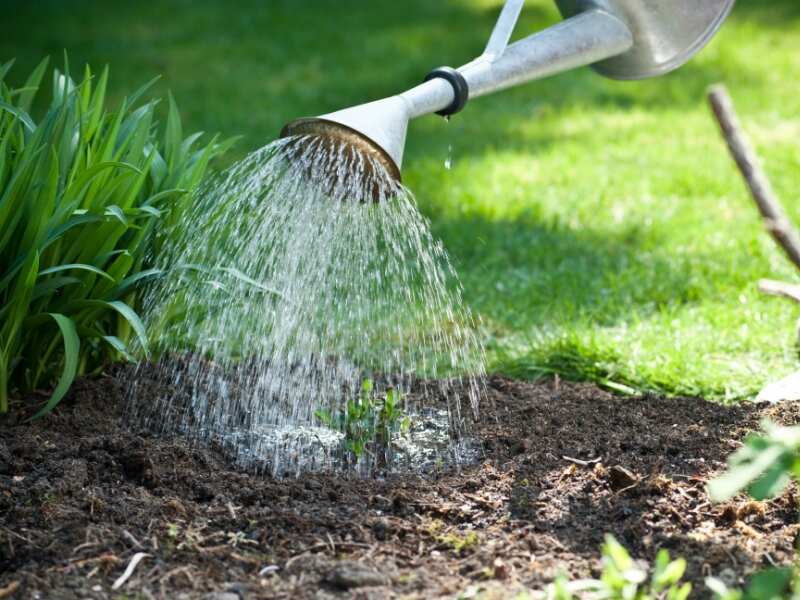
Established plants in vegetable gardens and raised garden beds need about 1 inch of water weekly. You can give your garden ½ an inch of water twice a week. That comes to about 60 gallons of water per 100 square feet.
Young plants and plants you have recently transplanted require more water than established plants. Most young plants require watering every day until their roots are developed. This usually takes about two weeks. Once plants are more established, they need a lot of water but do not need to be irrigated as often. Gradually reduce the schedule to about two times a week.
This water may come from rainfall, manual watering, or an irrigation system. To monitor the amount of water your yard is getting, you can install a rain gauge. This device measures the amount of rainfall by collecting and measuring precipitation.
You can also go old school and let your fingers do the measuring. Stick your finger into the dirt. If it feels dry two inches below the soil surface, your plants are thirsty and need irrigation. Veggies may need more water than other plants to provide a fruitful harvest. See our guide on how to water a vegetable garden to learn more.
How Much to Water Container Plants
Container gardens need more watering. They typically need daily watering, and in really hot weather, they might need water twice a day. Pots absorb heat, and the soil in containers dries out faster than ground soil. Even drought-tolerant plants need more watering if they are in containers.
Wilting plants are a sign container plants are not getting enough moisture. You can also do the finger test for potted soil. The second knuckle of your finger typically measures two inches. If the soil is dry to that second knuckle, your plants need more water.
Watering Tips
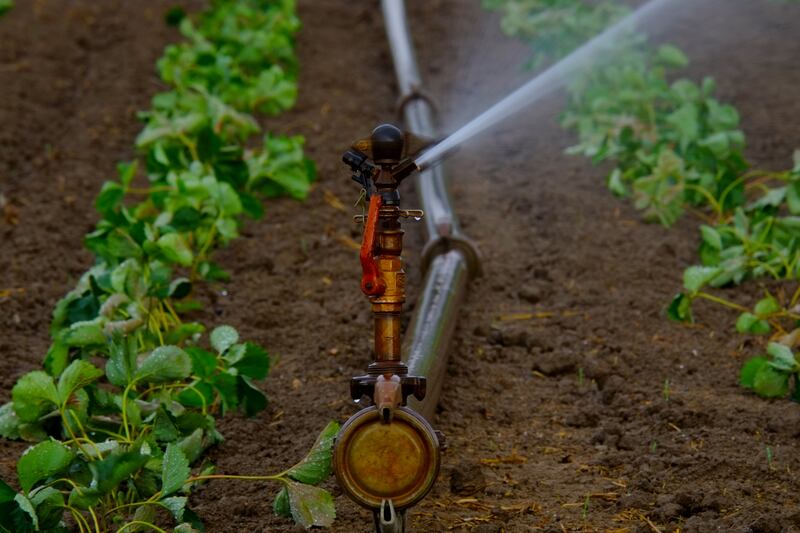
The best way to water plants is to target the soil surface and not the leaves. Give the leaves as little water as possible. Delivering water to the base of the plant helps ensure the plant receives the deep watering required for it to establish a healthy, strong root system.
Here are a few more general tips to follow when watering your plants:
- Sprinklers and Drip Irrigation: Avoid using overhead sprinklers. While they may be a good idea for your lawn, sprinklers that disburse water to plant foliage are not the best option. Drip irrigation and soaker hoses, on the other hand, will target plant roots. Homeowners can also attach a watering wand to a regular garden hose to disburse moisture directly to the root zone.
These methods also help you save water and money because water is going where it is needed. If you cannot use these devices, point your watering can or hose at the base of the plants.
- Mulch: Use mulch around the base of your plants to decrease evaporation rates. Place a 2 to 3-inch layer of mulch in your garden to help the soil retain moisture and cut back your watering schedule.
- Soil type: Your soil type affects your plants’ watering needs. Water passes through sandy soil easily. Clay soil, however, may not drain well. Give plants in clay soil less water in each watering session so that the soil has time to drain to avoid root rot, a common side effect of overwatering.
- Water deeply and infrequently: Watering deeply and infrequently helps plants develop resilient root systems that promote thriving vegetation. It is best to water plants deeply one to two days a week than to give them a little water every day. (So, watering 20 to 30 minutes a few days a week is better than watering for a few seconds daily.)
- Watering new plants: New plants need more frequent watering than mature plants. As a rule of thumb, young and less established plants need water in addition to rainfall. Wilting plants are a sign of underwatering. Water plants when the top two inches of soil are dry to prevent plants from wilting.
The Best Time to Water Houseplants

The best time to water houseplants is different than outdoor plants. The watering schedule depends on plant type and season. Indoor plants need more water during their growing season.
Houseplants originally from habitats where they received a lot of water, like philodendrons, will need regular watering to look their best. If your plant’s natural habitat was a dry area, like succulents, allow the soil to dry in between watering.
Generally, most indoor plants need watering one to two times a week in spring and summer. Water them less in the fall and winter.
Check your plants once a week. If you see wilting leaves or feel that the soil is dry up to your second knuckle, your plants are crying out for water. In general, let the top inch of soil dry out before watering houseplants.
FAQ About Watering a Garden
In addition to evaporation being a problem when watering during the heat of the day, the sun can cause the water to burn leaves. Watering early hydrates plants and helps them survive higher temperatures later in the day.
When you water in the late evening, water remains on leaves instead of drying out, which can cause fungal disease. For example, some plants and vegetables, like roses and squash, are very susceptible to diseases like powdery mildew.
Following the tips in this article will help you have a thriving garden. However, you want to keep a lookout for signs that your watering is out of balance so you can make adjustments as soon as possible. Here are some signs your watering schedule may need to be modified:
● Browning or yellowing leaves
● Drooping petals
● Flowers that are not blooming
● Soggy and limp leaves
● Root rot
● Moldy soil
Final Thoughts
Whether it’s perennials or annuals, you want your garden to be a beautiful display. If it’s veggies, you want a garden bed of thriving edibles to fill your tummy. While there are general rules of thumb for the best time to water your garden, many factors play a role. These include plant variety, climate, soil type, and whether plants are in full sun or shady areas.
If you want to enjoy a healthy garden without the effort of keeping up with a watering schedule, don’t worry, we got you. Let LawnStarter connect you with landscaping professionals in your area to manage all of your lawn and garden needs.
Main Photo Credit: Aleksandr Kichigin / Canva Pro / License
